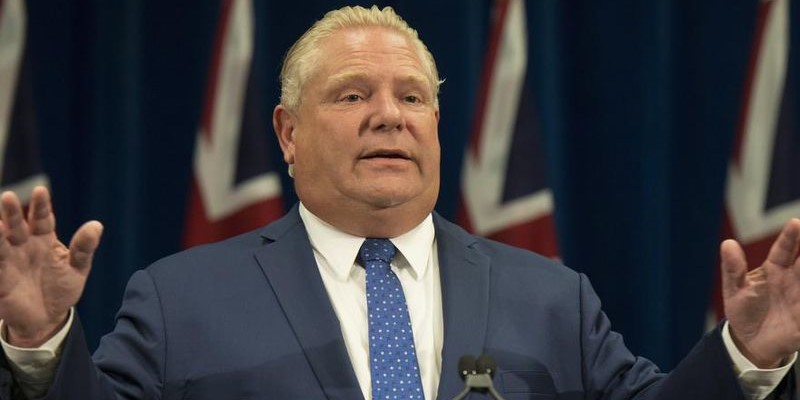Ford government chooses more spending over tax reductions and debt relief

Throughout his political career, Premier Doug Ford has spoken of the need to keep taxes low and to reduce Ontario’s provincial debt while keeping spending low. However, this rhetoric hasn’t been matched with action as the Ford government has consistently outspent its predecessor government led by Kathleen Wynne.
A new study assessed how the Ford government could have delivered on its commitments of growth-enhancing tax relief or debt reduction if it had resisted the temptation to spend even more freely than its predecessor.
First let’s compare spending levels. In its 2023/24 budget, the Ford government estimates it will spend $12,405 per person this year. By comparison, the Wynne government (after adjusting for inflation) spent an average of $11,784 per person during its time in office.
So how much additional tax relief or debt burden reduction—which it touted as top priorities— could the Ford government have provided if it had focused on these goals instead of spending?
In short, a lot.
Let’s look at the numbers. Had the Ford government simply maintained Wynne-level spending this fiscal year, it would save $9.5 billion relative to its budget projections. Over the course of the final three years of the government’s fiscal plan, holding spending to Wynne-era levels compared to the budgeted baseline, would have left Ontario taxpayers holding $27.8 billion less provincial government debt. That’s approximately $2,000 for every Ontarian.
Avoiding $2,000 per person in debt accumulation and thereby saving Ontarians from paying the interest on that debt every year would have been in keeping with the Ford government’s repeated promises to reduce the debt burden quickly. Instead, it has chosen the path of higher spending financed by borrowing.
The Ford government could also have chosen, instead of elevating spending, to lower taxes. Again, large-scale tax relief was often promised during the first Ford election campaign but still hasn’t been delivered.
But consider this—had the Ford government restrained spending it could have reduced the provincial share of the HST by two percentage points this year, saving Ontarians money on most purchases they make. Another option, which would likely do more to stimulate economic growth, would be to reduce income taxes. Here, the government would have many options, but if it simply held spending to Wynne-era levels it could have reduced taxes by $888 per tax filer (on average).
Previous analyses have shown the similarities between the Ford government’s approach to government spending and that of its predecessor. This analysis examines the cost of the Ford government’s decision to break from its commitment to reduce spending, showing that this choice has hamstrung additional efforts it may have made toward the stated priorities of debt reduction and large-scale tax relief.
Author:
Subscribe to the Fraser Institute
Get the latest news from the Fraser Institute on the latest research studies, news and events.

